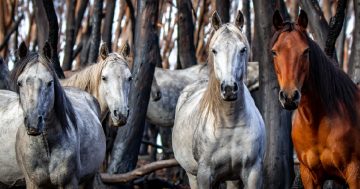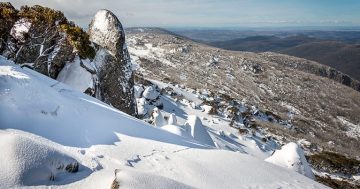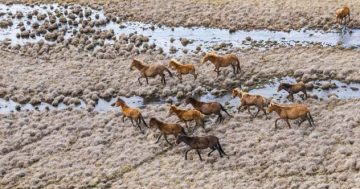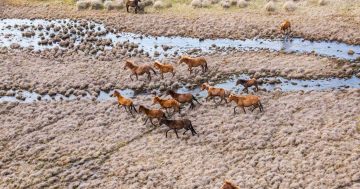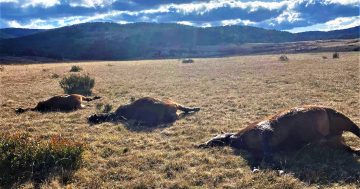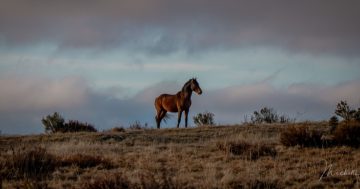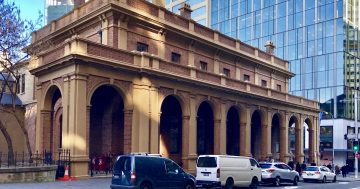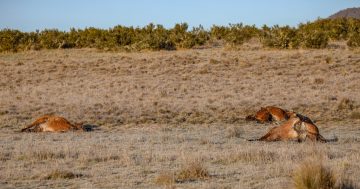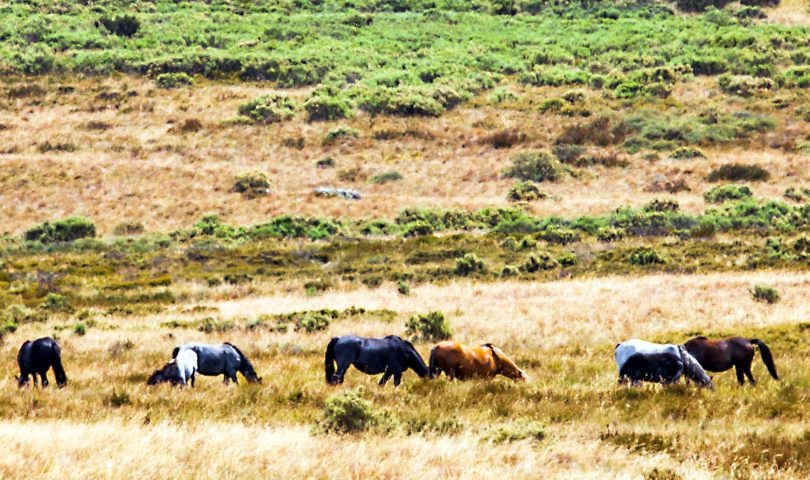
Feral horses are a major threat to the unique environment of the Australian Alps, says ACT Parks and Conservation Services.
Wild horses that cross into the ACT from Kosciuszko National Park in New South Wales, where culling has been halted, will be killed, according to ACT Parks and Conservation.
Director of ACT Parks and Conservation Services, Daniel Iglesias said the ACT’s threatened plants, animals and water catchment needed to be protected.
“Heavy hoofed animals damage waterways, cause erosion and trample habitat. They threaten the water quality in the Murray-Darling Basin,” he said.
“The science is clear. Feral horses, along with other European introduced pests such as pigs and deer, are a major threat to the unique environment of the Australian Alps.”
Mr Iglesias said the northern corroboree frog, which live in the moist alpine bogs of the ACT high country, was just one of the critically endangered animals whose habitat was damaged by hard hoofed animals including horses.
He said the catchment was a main source of drinking water in the ACT, and it relied on the integrity and protection of Namadgi National Park.
“Nationally, snowmelt and rainfall flowing from the Australian Alps contributes more than 30 per cent of inflows into the Murray-Darling system, and even more in dry years, despite covering just 0.2 per cent of the continent,” he said.
Feral horses did not recognise state boundaries, but the ACT had been effective in excluding horses from moving from Kosciuszko into the ACT’s high country to date, Mr Iglesias said.
“We will have a strong interest in whatever control programs NSW adopt, as they have to be effective enough to ensure ACT’s water catchment is not impacted by horses crossing the border,” he said.
“In the ACT, we are focused on ensuring our sensitive and critical water catchment is protected from the harmful impact of feral animals, including horses.”
NSW laws will recognise the heritage value of the feral horse or brumby in Kosciuszko National Park and set a framework for protecting it.
A heritage management plan will be prepared for the brumby, which will identify areas within the Kosciuszko National Park where populations will be maintained, and set rules around brumby management.
Deputy Premier John Barilaro said the heritage management plan would specifically prohibit lethal culling of the brumby and identify those areas in the park where brumbies can roam without causing significant environmental harm.
“If brumbies are found in highly-sensitive alpine areas of Kosciuszko National Park, resources will be allocated towards relocation first, followed by re-homing, should population numbers grow too high,” he said.












